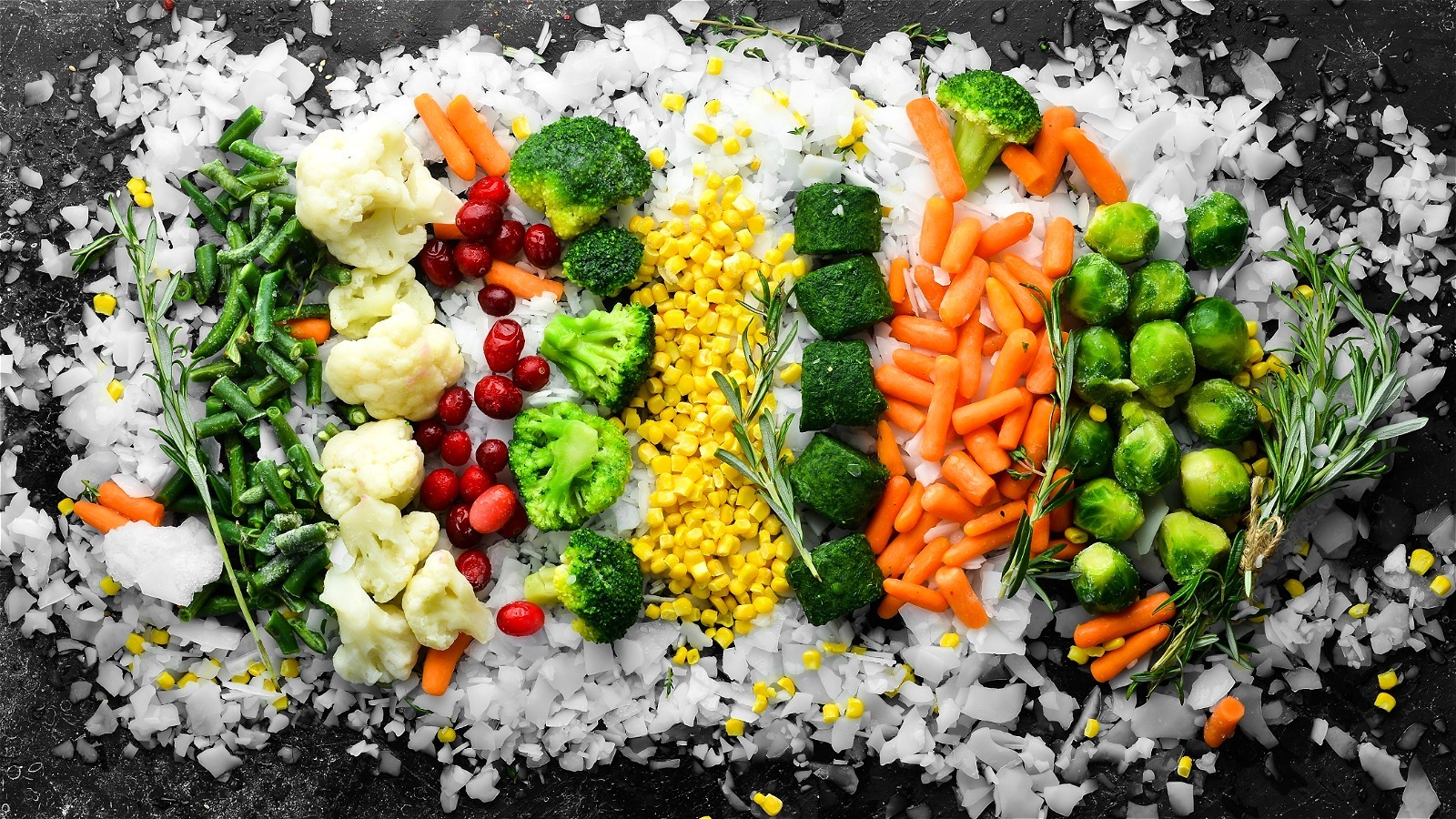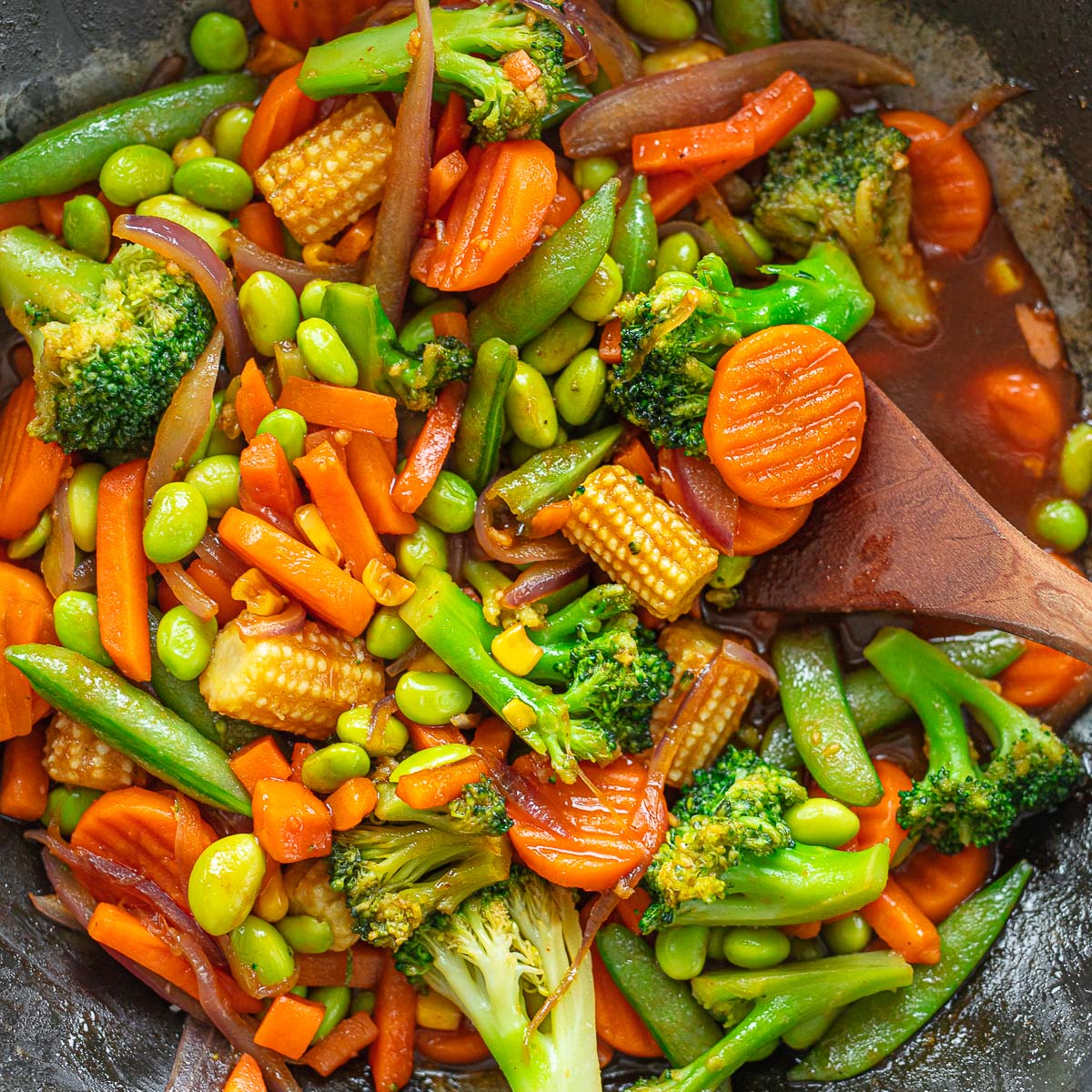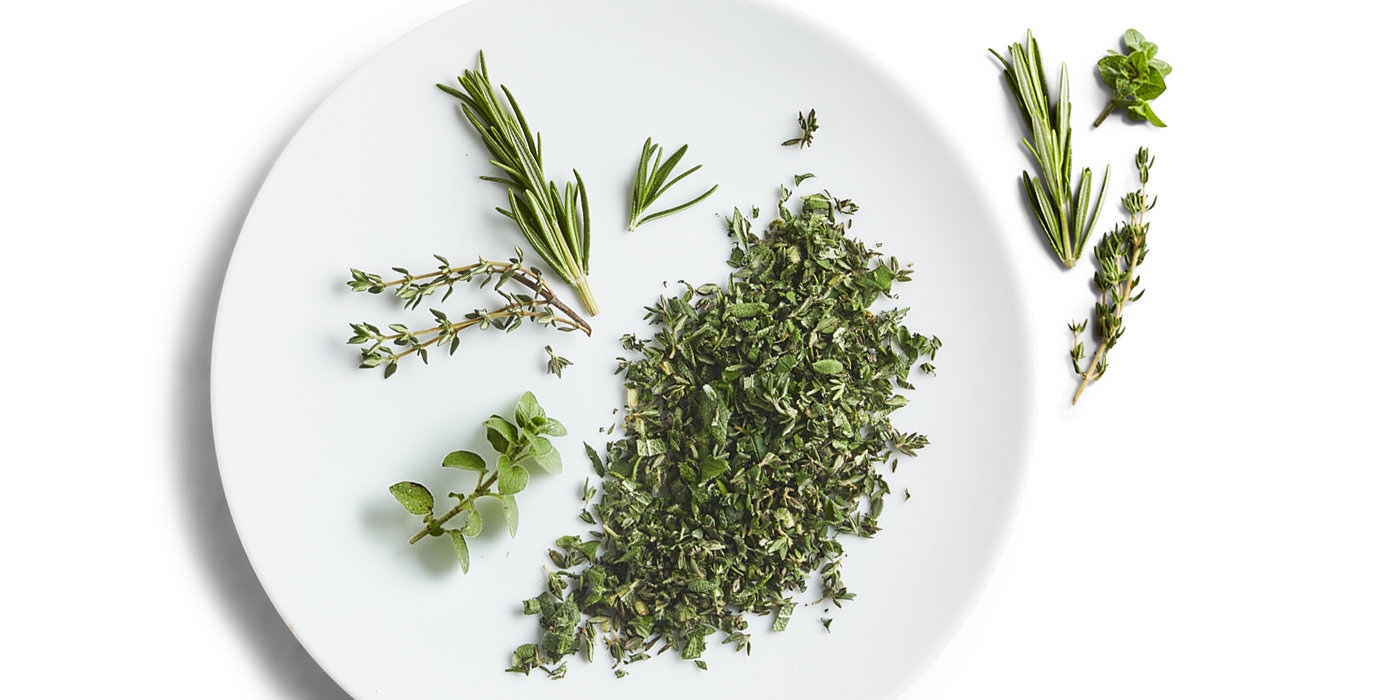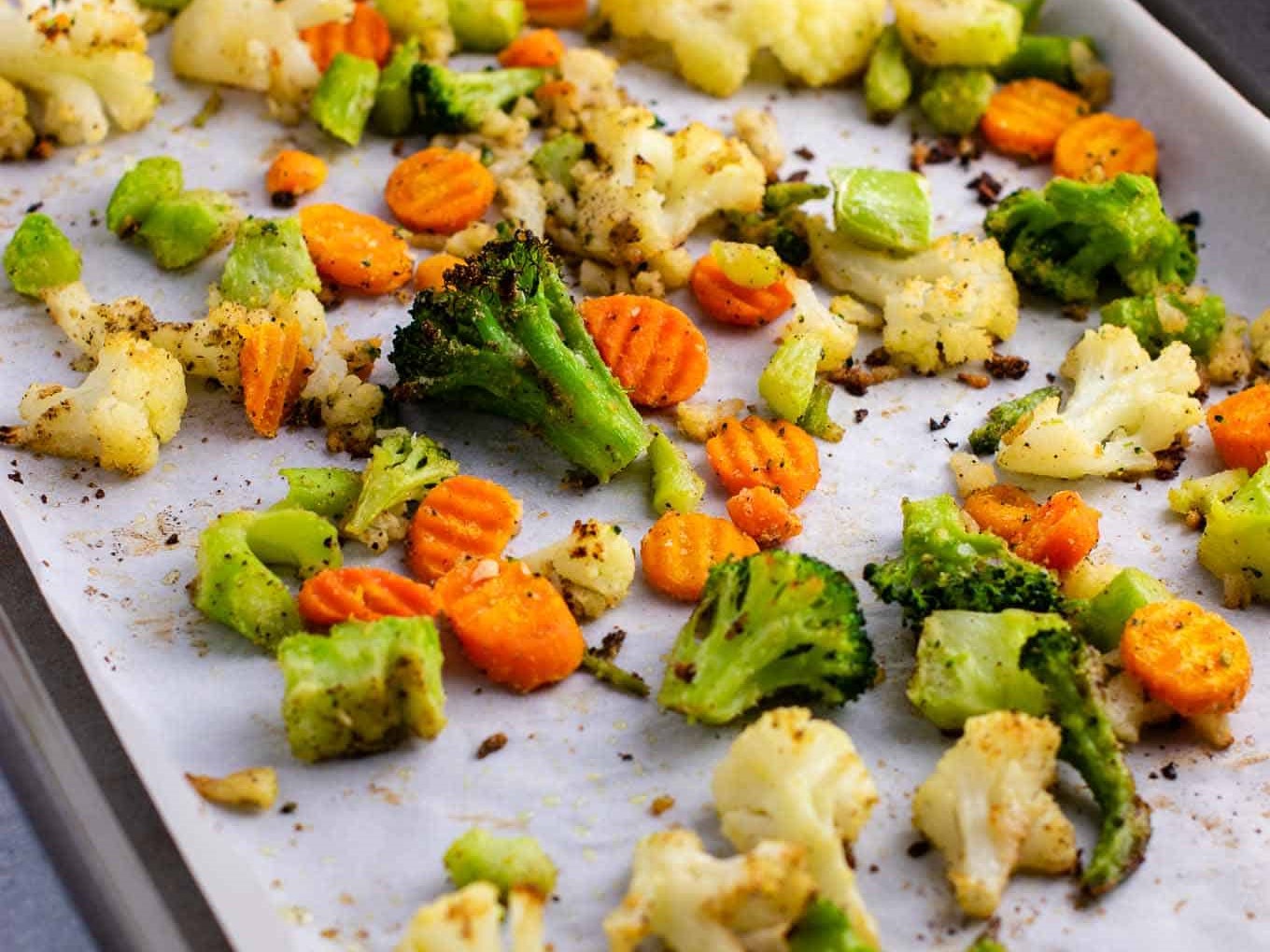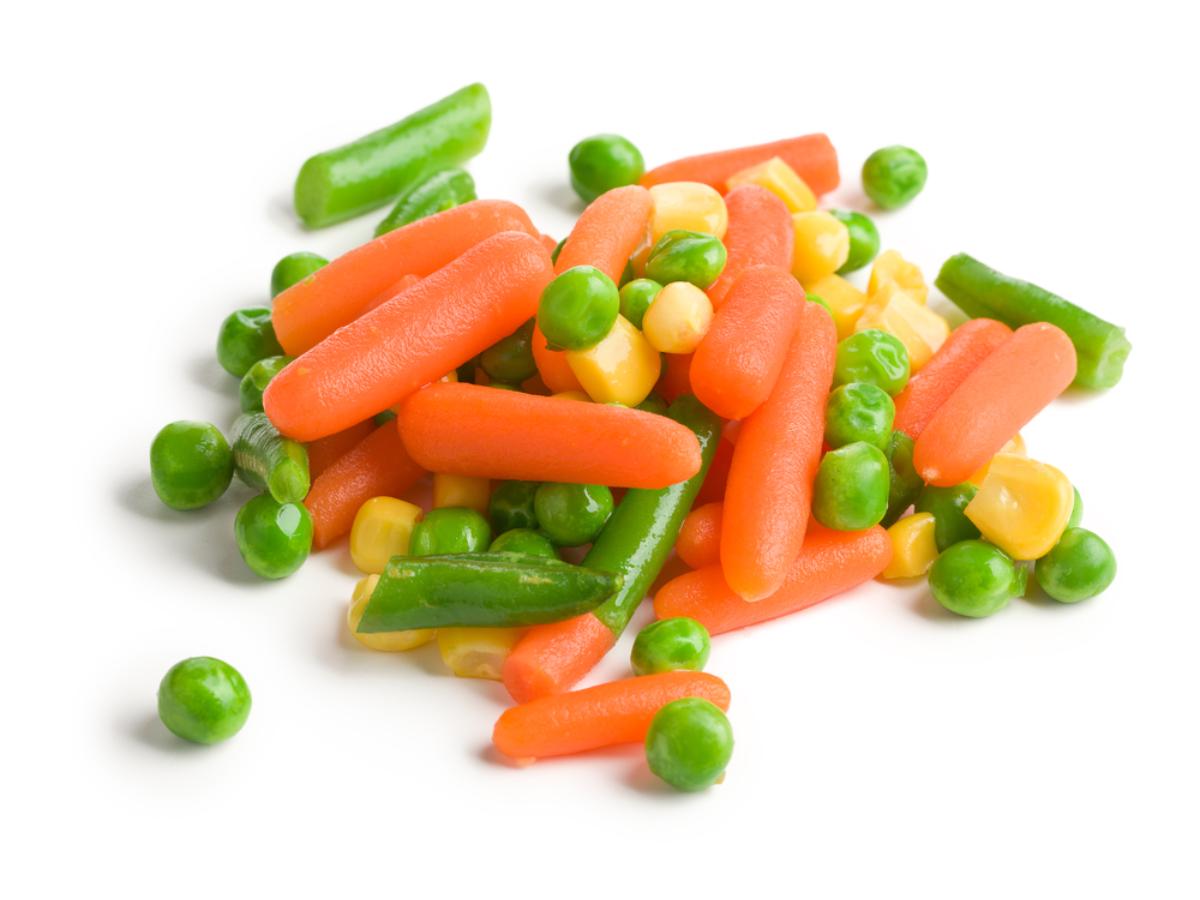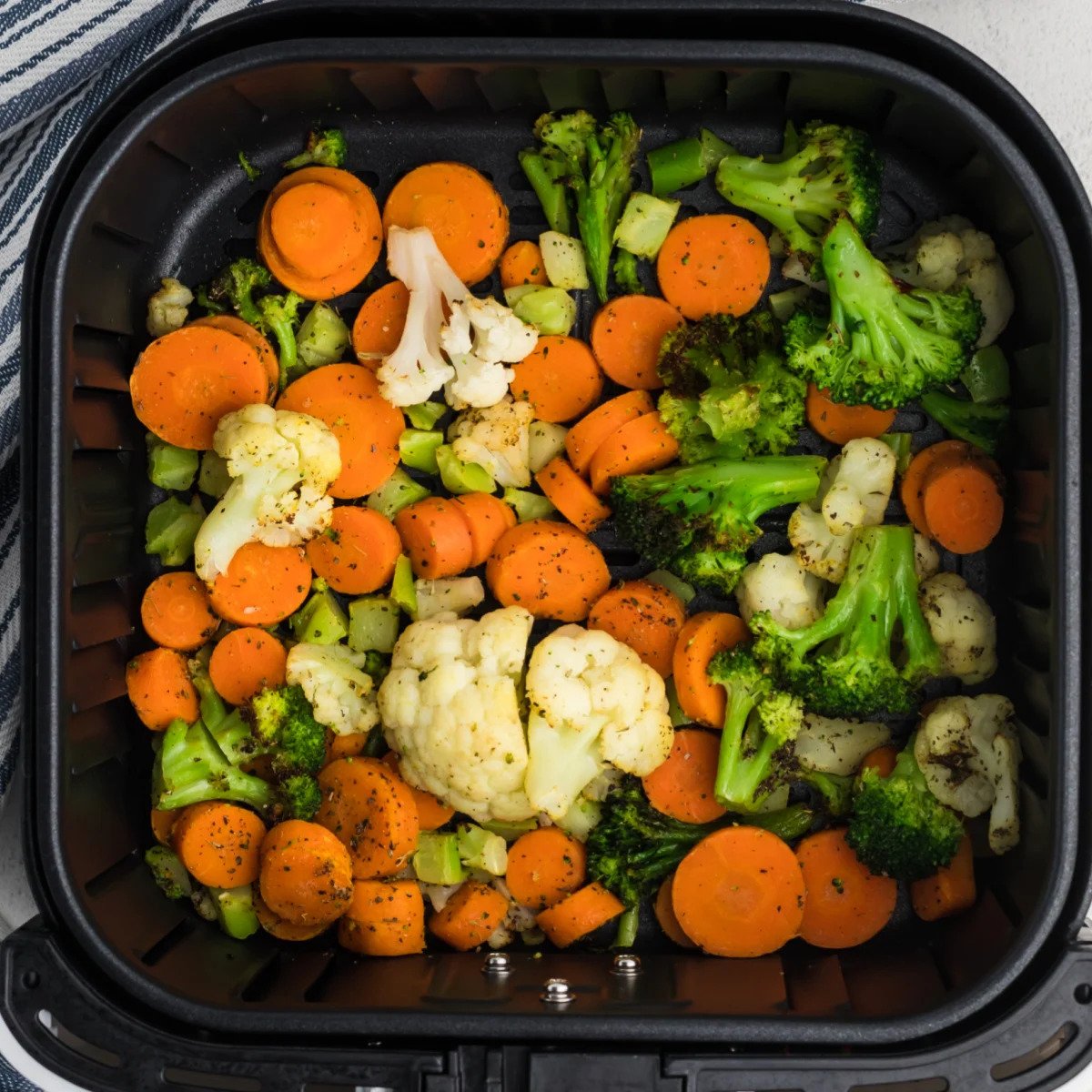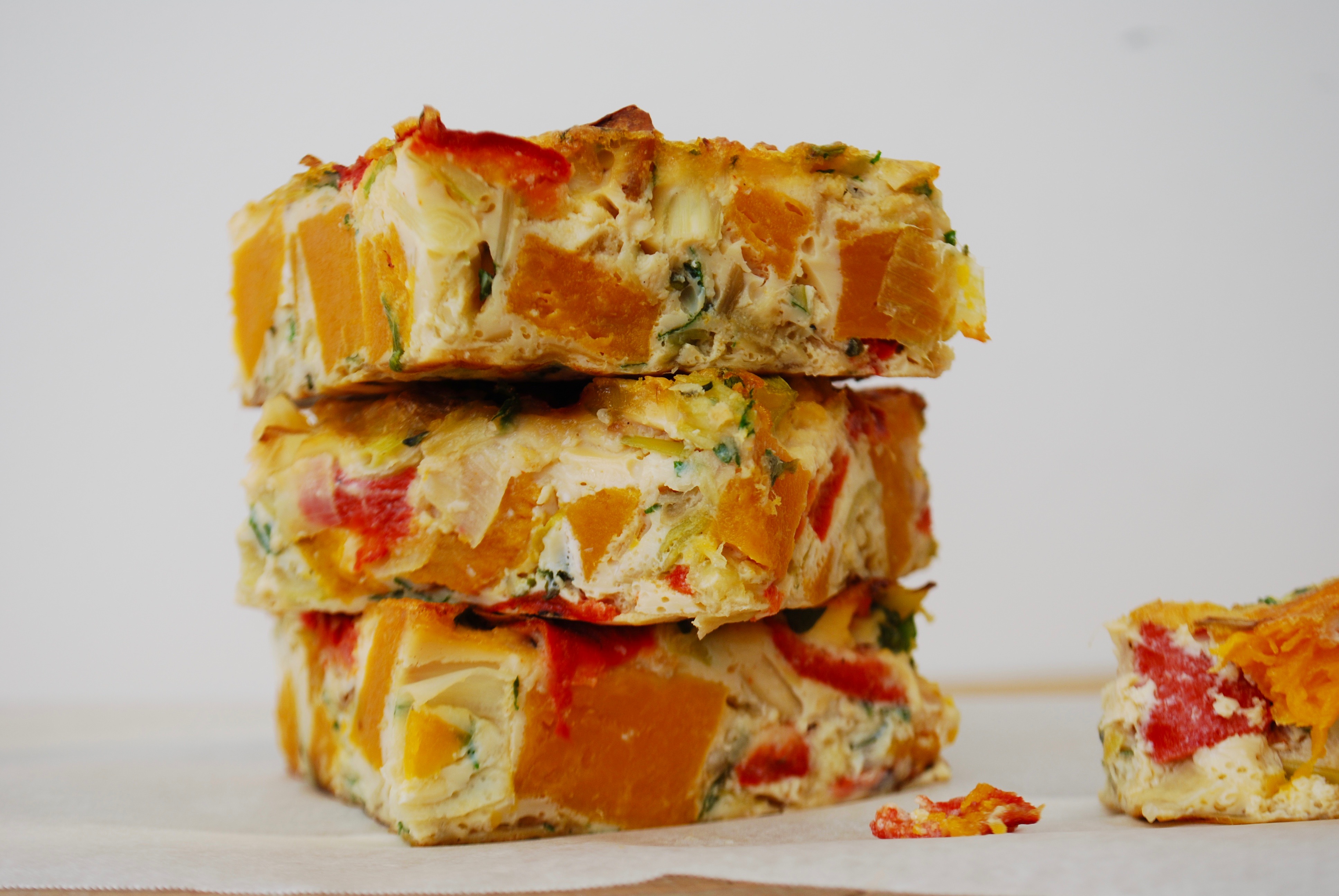Home>Gardening News and Trends>Latest News>What To Do With Frozen Mixed Vegetables
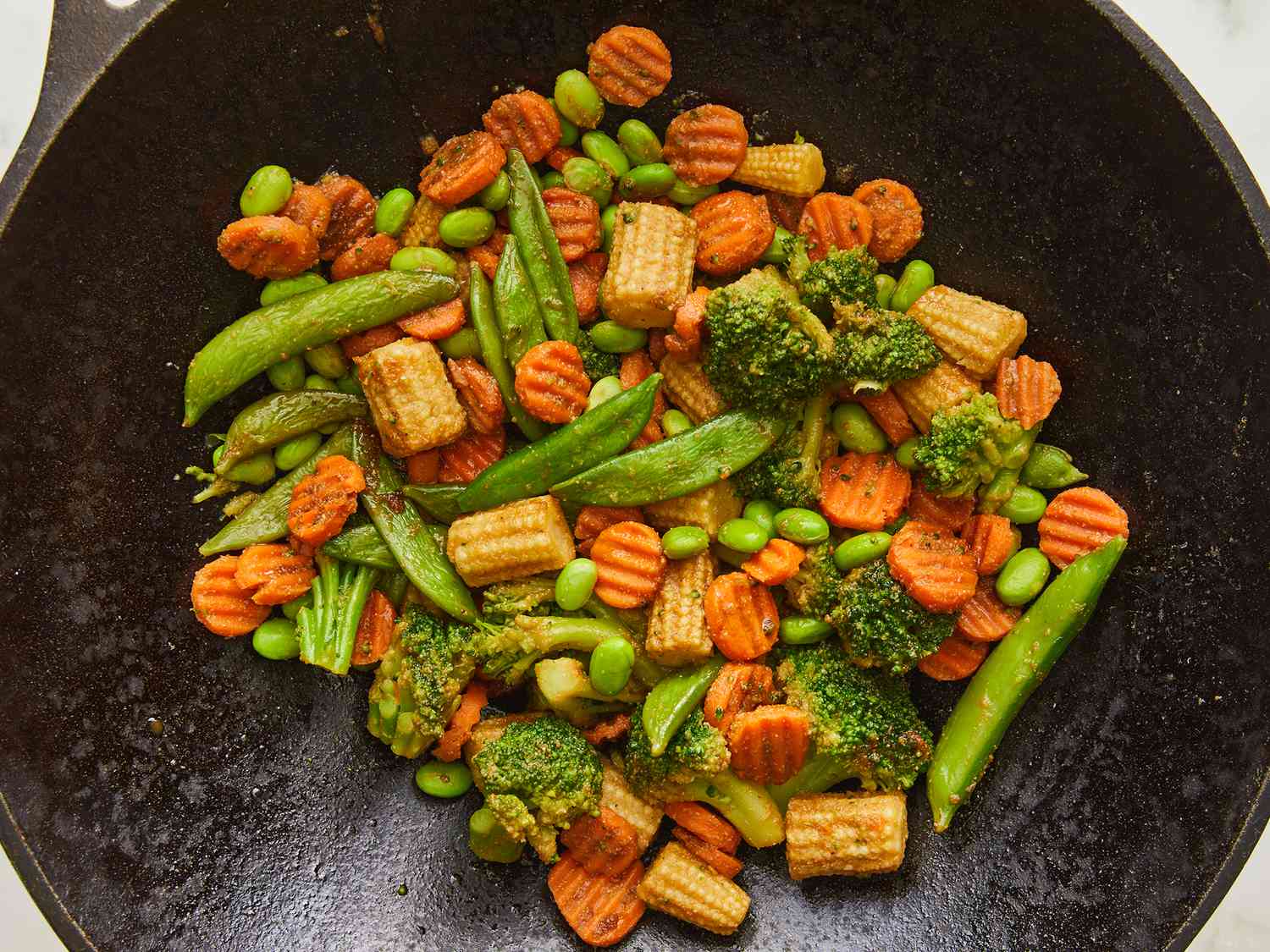

Latest News
What To Do With Frozen Mixed Vegetables
Modified: January 22, 2024
Discover the latest news and learn what to do with frozen mixed vegetables. Delicious recipes, cooking tips, and more!
(Many of the links in this article redirect to a specific reviewed product. Your purchase of these products through affiliate links helps to generate commission for Chicagolandgardening.com, at no extra cost. Learn more)
Table of Contents
Introduction
When it comes to making quick and convenient meals, frozen mixed vegetables are a versatile ingredient that can’t be beaten. Packed with essential nutrients and vibrant flavors, these frozen gems offer a range of benefits for both the health-conscious and time-strapped individuals. Whether you’re a busy professional, a parent juggling multiple responsibilities, or simply looking for an easy way to incorporate more vegetables into your diet, frozen mixed vegetables are a fantastic solution.
What sets frozen mixed vegetables apart is their unrivaled convenience. Unlike fresh produce, which requires washing, chopping, and sometimes blanching, frozen vegetables are prepped and ready to use straight from the freezer. This time-saving factor allows you to whip up delicious meals in a flash without compromising on taste or nutrition.
Furthermore, frozen mixed vegetables retain their nutritional value remarkably well. They are harvested at their peak freshness and flash-frozen immediately to lock in all the vitamins, minerals, and antioxidants. This means that even though they may spend some time in the freezer, their nutrient content remains intact, providing you with a convenient way to meet your daily vegetable requirements.
Another benefit of using frozen mixed vegetables is that they offer variety. A typical mix will contain a combination of carrots, peas, green beans, corn, and other delicious vegetables. This medley of flavors and colors can turn any simple dish into a visually appealing and appetizing feast.
Whether you’re looking to add a pop of color to stir-fries, create hearty soups and stews, or simply enjoy a nutritious side dish, frozen mixed vegetables offer endless culinary possibilities. In the following sections, we’ll explore different cooking methods, provide simple and tasty recipes, and offer tips for storing your frozen mixed vegetables to maximize their freshness and flavor.
Benefits of Using Frozen Mixed Vegetables
Frozen mixed vegetables offer a multitude of benefits that make them an excellent addition to any kitchen. Here are some key advantages of using frozen mixed vegetables:
- Nutritional Value: Despite being frozen, mixed vegetables retain their nutritional value. They are harvested at their peak ripeness and flash-frozen immediately, which helps to preserve their vitamins, minerals, and antioxidants. This means that you can still enjoy the health benefits of fresh vegetables even during the off-season or when fresh produce is not readily available.
- Convenience: One of the major advantages of using frozen mixed vegetables is their convenience. They are pre-washed, pre-cut, and ready to use straight from the freezer. This eliminates the need for time-consuming preparation tasks like washing, peeling, and chopping. With frozen mixed vegetables, you can easily add a variety of vegetables to your meals without the hassle.
- Long Shelf Life: Frozen mixed vegetables have a longer shelf life compared to fresh produce. This means you can stock up on them and have a readily available source of vegetables whenever you need them. It’s a great way to ensure you always have nutritious options on hand, especially during busy times or when fresh vegetables may not be easily accessible.
- Versatility: Frozen mixed vegetables offer incredible versatility in the kitchen. You can incorporate them into a wide range of dishes, including stir-fries, soups, stews, casseroles, salads, and pasta dishes. The combination of carrots, peas, green beans, corn, and other vegetables in a typical mix adds color, texture, and flavor to your meals.
- Cost-Effective: Using frozen mixed vegetables can be more cost-effective than buying fresh produce, especially when certain vegetables are out of season. You can enjoy a variety of vegetables at a fraction of the cost, making them an affordable option for budget-conscious individuals or families.
With their nutritional value, convenience, long shelf life, versatility, and cost-effectiveness, frozen mixed vegetables are a smart choice for those looking to incorporate more vegetables into their diet without sacrificing flavor or time. In the following sections, we’ll explore different cooking methods and provide simple recipes that showcase the deliciousness of frozen mixed vegetables.
Cooking Methods for Frozen Mixed Vegetables
When it comes to cooking with frozen mixed vegetables, there are several methods you can use to bring out their delicious flavors and maintain their crispness. Here are some popular cooking methods:
- Stir-Frying: Stir-frying is a quick and easy way to cook frozen mixed vegetables while preserving their vibrant colors and crunchy texture. Heat a tablespoon of oil in a wok or skillet over high heat. Add the frozen vegetables and stir-fry for 3-5 minutes until they are tender-crisp. You can add seasonings like soy sauce, garlic, ginger, or chili flakes to enhance the flavor.
- Steaming: Steaming is a gentle cooking method that helps retain the nutrients in frozen mixed vegetables. Fill a pot with a few inches of water and bring it to a boil. Place the vegetables in a steamer basket or colander, and then place it over the boiling water. Cover and steam for 5-7 minutes until the vegetables are tender. Serve them as a side dish or add them to salads or stir-fries.
- Boiling: Boiling is a straightforward method for cooking frozen mixed vegetables. Bring a pot of water to a boil and add the frozen vegetables. Cook for 3-5 minutes until they are tender. Be careful not to overcook them to avoid losing their crunchiness. Drain the vegetables and season them with salt, pepper, or your favorite herbs and spices.
- Roasting: Roasting is a fantastic way to bring out the natural sweetness and intensify the flavors of frozen mixed vegetables. Preheat the oven to 425°F (220°C) and line a baking sheet with parchment paper. Toss the vegetables with a bit of oil, salt, and pepper, and spread them out in a single layer on the baking sheet. Roast for 20-25 minutes, stirring once halfway through, until the vegetables are golden and caramelized.
- Soup/Stew: Frozen mixed vegetables are perfect for adding depth and nutrition to soups and stews. Simply add them directly to your favorite soup or stew recipe, and let them simmer until they are cooked through. Whether it’s a comforting vegetable soup or a hearty beef stew, the frozen mixed vegetables will contribute to a well-balanced and flavorful dish.
These cooking methods are just a few examples of how you can prepare frozen mixed vegetables. Feel free to experiment with different seasonings and combinations to suit your taste preferences. Frozen mixed vegetables are incredibly versatile and can be easily incorporated into a wide variety of dishes. In the next section, we’ll explore some simple and delicious recipes that showcase the versatility of frozen mixed vegetables.
Simple Recipes using Frozen Mixed Vegetables
Frozen mixed vegetables can be the star ingredient in a range of simple and delicious recipes. Here are a few ideas to spark your culinary creativity:
- Vegetable Fried Rice: Heat a tablespoon of oil in a large skillet or wok over medium-high heat. Add cooked rice and frozen mixed vegetables, along with diced onions, garlic, and any other desired veggies. Stir-fry for a few minutes until the vegetables are tender and the rice is heated through. Push the rice to one side of the pan and crack an egg into the empty space. Quickly scramble the egg and mix it with the rice and vegetables. Drizzle with soy sauce and serve hot.
- Roasted Vegetable Medley: Preheat the oven to 425°F (220°C). Toss frozen mixed vegetables with olive oil, minced garlic, and your choice of herbs and spices, such as thyme, rosemary, salt, and pepper. Spread the vegetables out on a baking sheet lined with parchment paper. Roast for 20-25 minutes, stirring halfway through, until the vegetables are caramelized and tender. Serve as a flavorful side dish or as a delicious addition to salads or grain bowls.
- Vegetable Stir-Fry: Heat oil in a wok or skillet over high heat. Add frozen mixed vegetables, along with sliced bell peppers, onions, and any other desired vegetables. Stir-fry for 3-5 minutes, until the vegetables are tender-crisp. In a small bowl, whisk together soy sauce, garlic, ginger, honey, and cornstarch. Pour the sauce over the vegetables and toss to coat. Cook for an additional 1-2 minutes until the sauce thickens. Serve hot over rice or noodles.
- Vegetable Soup: In a large pot, sauté diced onions, carrots, and celery in a tablespoon of oil until they begin to soften. Add frozen mixed vegetables, vegetable broth, diced tomatoes, and your choice of herbs and spices. Simmer the soup for about 15-20 minutes, until the vegetables are tender. Season with salt, pepper, and any additional herbs or spices to taste. Serve the warm and comforting vegetable soup with a side of crusty bread.
- Mixed Vegetable Quinoa Salad: Cook quinoa according to package instructions and let it cool. In a large bowl, combine cooked quinoa, frozen mixed vegetables (thawed), diced cucumbers, cherry tomatoes, feta cheese, and chopped fresh herbs like basil or parsley. Make a simple dressing by whisking together olive oil, lemon juice, garlic, salt, and pepper. Pour the dressing over the salad and toss to combine. Serve chilled as a refreshing and nutritious salad.
These are just a few examples of the many possibilities for incorporating frozen mixed vegetables into simple yet tasty recipes. Feel free to customize them to your liking and experiment with different flavors and seasonings. The versatility of frozen mixed vegetables allows you to enjoy a variety of healthy and flavorful meals with minimal effort. In the next section, we’ll share some tips on how to properly store frozen mixed vegetables to maintain their freshness.
Tips for Storing Frozen Mixed Vegetables
To make the most of your frozen mixed vegetables and ensure their freshness and quality, here are some helpful tips for storing them:
- Keep them frozen: It’s crucial to keep your frozen mixed vegetables at a consistently cold temperature. Store them in the freezer at 0°F (-18°C) or below to maintain their quality and prevent freezer burn. Make sure the packaging is tightly sealed to avoid any moisture or air exposure.
- Use airtight containers or freezer bags: If the original packaging of the frozen mixed vegetables is not resealable, transfer them to airtight containers or freezer bags. This helps to prevent freezer burn and maintain their flavor and texture over an extended period.
- Label and date the packages: To keep track of the storage time, label each container or bag with the contents and the date you froze them. This will help you prioritize using the oldest packages first and avoid potential spoilage.
- Optimize storage space: Arrange your frozen mixed vegetables in a way that maximizes the storage space in your freezer. Flat, stackable containers or bags work well for this purpose. You can also separate them into smaller portions to allow for easier retrieval and prevent unnecessary thawing of the whole package.
- Follow recommended storage times: While frozen mixed vegetables can stay safe to eat indefinitely if kept at a constant temperature, it’s best to consume them within the recommended storage times for optimal quality. Generally, they can be stored for around 8-12 months, but it’s always a good idea to check the specific guidelines on the packaging.
- Avoid repeated thawing and refreezing: To maintain the texture and taste of your frozen mixed vegetables, try to avoid thawing and refreezing them multiple times. Instead, thaw only the amount you need for a particular recipe to minimize the risk of spoilage or degradation in quality.
By following these tips, you can ensure that your frozen mixed vegetables stay fresh and delicious for a long time. They will be readily available whenever you need a quick and healthy addition to your meals. Whether you’re using them in stir-fries, soups, salads, or any other dish, properly stored frozen mixed vegetables can be your go-to ingredient for nutritious and convenient cooking.
Conclusion
In conclusion, frozen mixed vegetables are a fantastic addition to any kitchen, offering a range of benefits that make them a staple ingredient for quick and convenient meals. Their nutritional value, convenience, long shelf life, versatility, and cost-effectiveness make them a smart choice for individuals and families looking to incorporate more vegetables into their diet without compromising on taste or time.
With their vibrant colors and crisp textures, frozen mixed vegetables can be used in various cooking methods, including stir-frying, steaming, boiling, roasting, and adding to soups and stews. These methods help bring out their flavors while preserving their nutritional value. From vegetable fried rice and roasted vegetable medley to vegetable stir-fry and mixed vegetable quinoa salad, the possibilities for incorporating frozen mixed vegetables into simple and delicious recipes are endless.
When it comes to storage, it’s essential to keep your frozen mixed vegetables in airtight containers or freezer bags, labeled with the contents and date of freezing. This ensures freshness and prevents freezer burn. By following these storage tips and consuming your frozen mixed vegetables within the recommended time, you can enjoy their flavors and nutritional benefits to the fullest.
So take advantage of the convenience and versatility of frozen mixed vegetables. Keep them on hand for those moments when you need a quick and wholesome addition to your meals. With their vibrant colors, flavors, and nutrients, frozen mixed vegetables can elevate any dish and have you enjoying the benefits of vegetables in no time.
